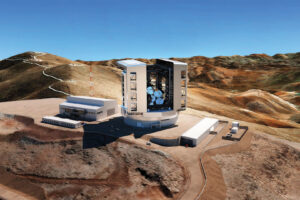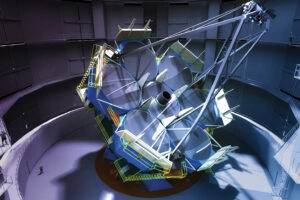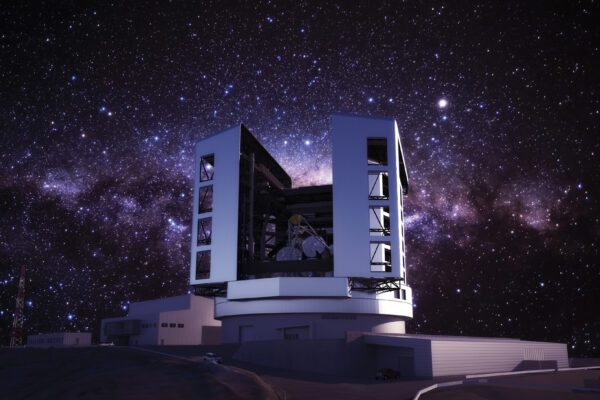Scientists at The University of Texas at Austin are playing an instrumental role in the construction of the largest optical telescope in the world.
UT is part of a consortium of universities and research institutes working together to plan and build the Giant Magellan Telescope, referred to as GMT, which should complete construction by 2030. The telescope will reside on Las Campanas Peak in Chile, a location selected because its stable atmosphere and low light pollution make it ideal for astronomical observation.
Construction of the telescope can be broken down into two categories: the big mechanics of the telescope — such as the mirrors — which will stay the same over the course of the telescope’s expected 50- to 100-year lifespan, and the instrumentation, which will be replaced over time as the science and technology progresses. UT astronomers are taking the lead on one of the major pieces of instrumentation that will be used on the telescope when it opens.
Under the leadership of UT’s Vice President of Research Daniel Jaffe, a team of students, postdoctoral scholars and staff members are designing the telescope’s near infrared spectrograph. The instrument, which will take about four years to complete, will be used to help scientists understand the process of planets and stars forming out of interstellar clouds of gas by examining near infrared light, said Taft Armandroff, director of McDonald Observatory and vice chair of the GMT board of directors.
“It’s a really cool instrument,” Armandroff said. “No one in the world will have anything like this except for GMT.”
When the spectrograph is complete, Armandroff said it will be transported to Chile and put on another telescope near its future home for further testing and limited scientific research while the rest of the GMT is constructed. In the meantime, Jaffe’s team had a prototype of the spectrograph attached to a telescope at UT’s McDonald Observatory to test the technology and design of the instrument.


Despite COVID-19 changing how the consortium collaborates, Armandroff said, the project is still on schedule. The seven giant mirrors, which each measure 27.5 feet wide, are at various stages of construction at the University of Arizona’s Richard F. Caris Mirror Lab: Two are complete, four have been cast and are now being refined and tested for precision, and the last is waiting to be cast.
Once cast, each mirror goes through a painstaking four-year process of grinding and polishing to ensure the accuracy of the mirror down to one-twentieth a wavelength, a measure Armandroff said is hard to comprehend. The mirrors are then put in storage in Tucson, Arizona, until the structure for the telescope is designed and completed in Illinois.
“It’s an incredibly long process,” Armandroff said. “And we’re all kind of impatient, because we’d like to use it for science today.”
Once all the major mechanical elements of the telescope are finished, the mirrors and structure will make their way separately to Chile on a series of trucks and ships. Armandroff said storing them in the United States until that point is safer due to the amount of seismic activity in Chile. However, he said this activity isn’t a concern once the telescope is fully constructed because the structure will be the first observatory to be built with seismic systems to protect the telescope from such activity, Armandroff said.
Armandroff said researchers hope that once the telescope is complete, students and faculty from UT will be able to observe remotely using technology similar to what McDonald Observatory has used during the pandemic to allow access to the telescope without scientists being there in person.
“That would allow us to expose a lot of students, postdocs and faculty to use the telescope,” Armandroff said. “So there wouldn’t be this barrier that everyone would have to travel to Chile to use it.”



